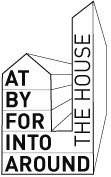

The buildings in my neighbourhood don't have doorbells, buzzers
or intercom systems. Instead they have a keypad.
Only those people who know the security code can enter.
However, all the buildings have inner courtyards.
Those courtyards are big spaces, safe from the outside street.
They are surrounded on all sides by hundreds of back windows.
My bedroom window faces one of those courtyards.
Whenever I am in my bedroom and I look out the window,
I see my neighbour's windows.
My neighbours and I don't have curtains, so I can see and be seen.
The situation seems like a kind of panopticon, but it functions in the
opposite way that the panoptical system, conceived for prisons, does.
Here, there is not a dominant authority looking at and controlling all.
Instead, each individual produces a gaze and, at the same time,
a gaze that is produced by everyone and by no one.
The main function of these courtyards seems to be the development
of relational and shared activities.
My courtyard has a community garden complete with tables, chairs,
and even a grill.
There is also a community garbage and recycling spot,
a community bicycle-parking area and a community laundry.
Thus, it is a public space for a private community.
It is a space conceived to create a sense of collectivity
among individuals.
It is a space divided by fences and walls, often empty of people.
Community courtyard, 2007 / 2008
Photography and text
Series of photos in double slide projection; dimensions variable
Lightbox (with 1 photo and a text), digital print on acrylic, alluminium
and fluorescent lamps; 180 x 61 x 10 cm
